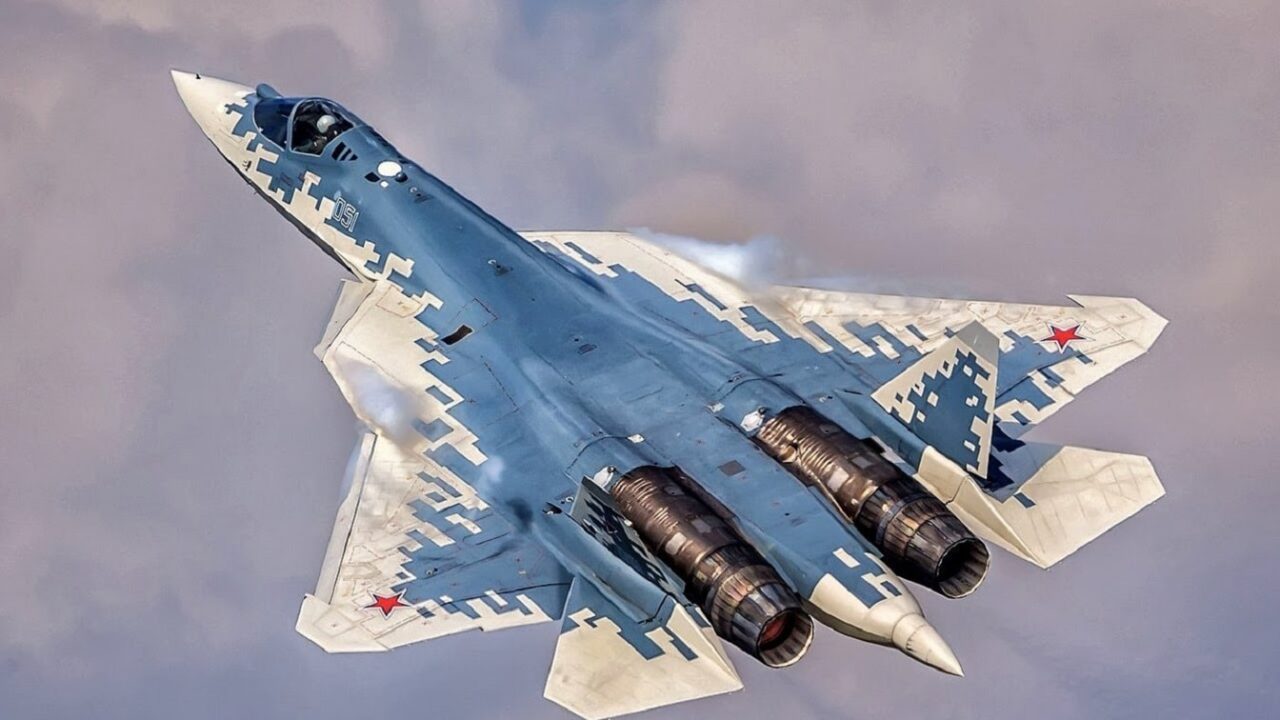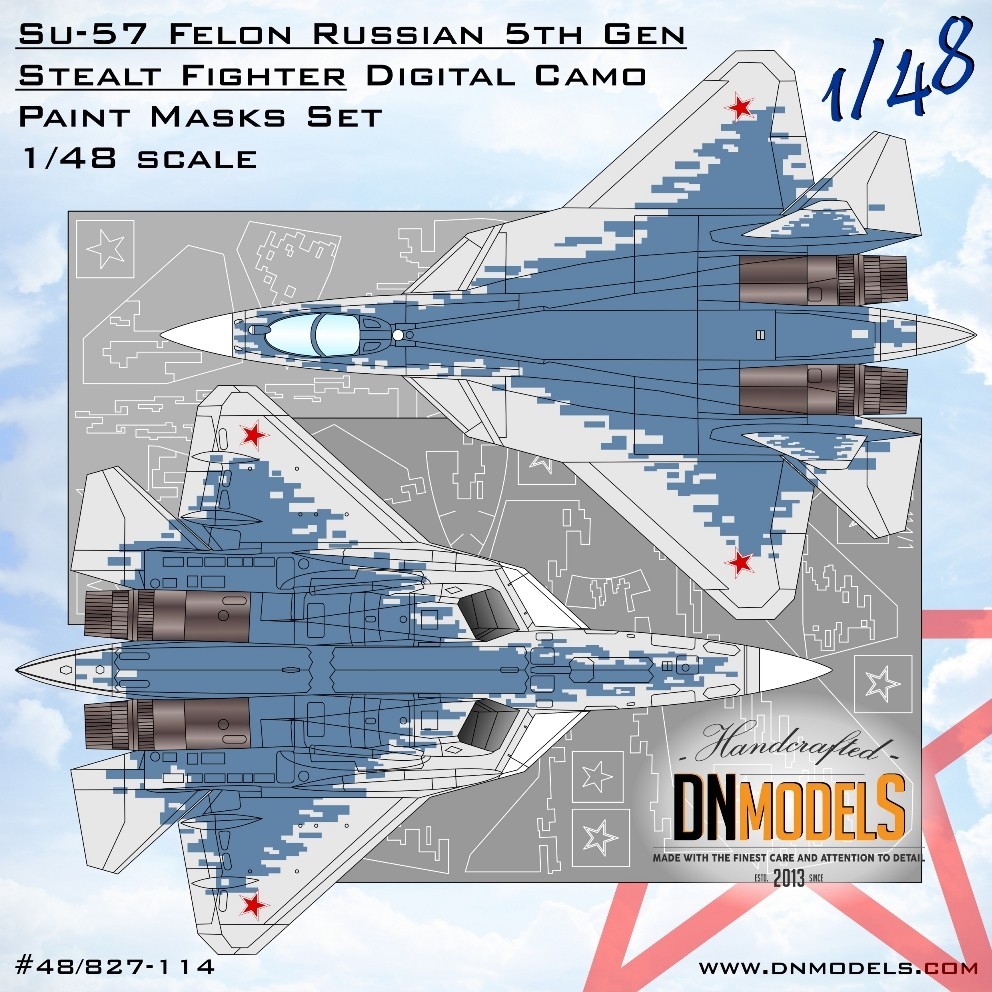Su 57 Wing - Sukhoi aircraft share parts, but the single-engine jet is expected to be cheaper and exported.
Rostec has released images of the Sukhoi Su-57E and 'Checkmate' fighter jets together in Russia. This shoot was created for a website that published an interactive article with more information about the aircraft.
Su 57 Wing

Side-by-side photos of the two fighters perfectly match the features of both, some of which are shared by the plane. The Sukhoi Su-57E is the export version of the twin-engine jet, the first to enter service with the Russian Air Force.
New Images Shows The Cheap Build Quality Of Russian Su 57
The "Felon", as it is also called, was developed 10 years ago and in recent years has been used worldwide, albeit with a small fleet, mainly consisting of pre-production aircraft.
Russia ordered 76 fighter jets, the first of which was delivered last year. However, the lack of resources has prompted Rostec to offer the Su-57 to other countries, but there is still no closed plan.
The Checkmate fighter is still an early project, unveiled in July at the MAKS 2021 air show. It uses a single engine, something that has not happened since the MiG-23/27 in the late 1960s. Like the Su-57, the new jet is supersonic and has a low radar signal, which ensures the UAC, which controls the Sukhoi.
A comparison between the two fighters shows points of commonality such as the design of the wings and the use of the Izdeliye 30 engine. However, Rostec says that the new fighter jet benefited from several other systems of the Su-57.
First Serially Produced Sukhoi Su 57 Stealth Fighter Jet Testing Kinzhal Hypersonic Missiles
"Checkmate was created using scientific and technical bases found during the development of the external version of the Su-57E aircraft. In particular, the aircraft inherited the cabin, on-board systems and some other things. This makes it possible to reduce the cost of the aircraft and simplify its maintenance, the company says.
In fact, Checkmate, which should be called Su-75, is a project focused on foreign countries. It is expected to have a low price, but it is equipped with several modern systems such as WAD (Wide Area Display) cockpit, AESA radar and internal weapons bay.
To justify the return to single-engine fighter aircraft, Russia has a large number of aircraft of this type, representing 44% of the approximately 8,000 military aircraft in service in the country today.

Loaded with checkmate long way to work. The first prototype is expected to make its first flight in 2023 and enter service from 2026. But the Russians are certainly not good at keeping timetables.
No, The Su 57 Isn't 'junk:' Six Features We Like On Russia's New Fighter
The common appearance of the Su-57 and Checkmate will not be limited to photo shoots. Rostec has already confirmed that a full-size mockup of the new aircraft will be available at the Dubai Airshow from November 14.
China may be about to make the first flight of the Xian H-20, the first developed bomber…
The F-35 Lightning II fighter jet will first be equipped with a new AESA (Active Electronically Scanned Array)…
India's military expansion is relentless, with orders for new soldiers continuing unabated. But instead of searching for aircraft... It is a product of PAK FA (Russian: ПАК ФА, short for: Перспективный авиационный комплекс фронтовой авиации, romanized: Perspektivenyy Aviatsioni Aviatsioni-Aviationutical Aviatsion Aviatsion Aviatsion Aviatsion Aviatsion Aviatsion Aviatsion Aviatsion Aviatsion Kompleksi Forces') project, launched in 1999 as a modern and affordable alternative to MFI (Mikoyan Project 1.44/1.42). Sukhoi's internal designation for the aircraft is T-50. The Su-57 is the first aircraft in Russia's military service developed with advanced technology and is intended to form the basis of the family of pilots.
Su 57 Stealth Fighter Allegedly Being Used In Combat In Ukraine
The Su-57 is a versatile fighter capable of air attack as well as ground and sea attack, and includes stealth, super maneuverability, super cruise, integrated avionics and large internal payload capacity.
This aircraft is expected to succeed the MiG-29 and Su-27 in Russian military service and has been exported. The first prototype aircraft flew in 2010, but the project would face long-term success due to various structural and technical problems encountered during testing, including the destruction of the first production aircraft in an accident before it arrived. After repeated delays, the first Su-57 entered service with the Russian Air Force (VKS)
In 1979, the Soviet Union defined the need for the next fighter – expected to be operational in the 1990s. The project became the I-90 (Russian: И-90, short for: Истребитель 1990–х годов, lit. 'Fighter of the 1990s') and required the fighter to be "multifunctional" (i.e. multirole) by having a wide range of combat capability, and it would replace the MiG-29 and Su-27 in front of the tactical air service. The following two projects were developed to meet these requirements: MFI (Russian: МФИ, short for: Многофункциональный фронтовой истребитель, lit. 'Multifunctional Frontline Fighter') and the small LFI:И, short for LFI:И,'t ,'Lt. .'), with an imagined work that began in 1983.

Although Sukhoi did not participate in the MFI, Sukhoi started its program in 1983 to develop the technology for the next fighter, which resulted in the advanced aircraft sweeping the S-32 test, later redesigning the S-37 and Su-47. Due to the lack of funds after the collapse of the Soviet Union, the MFI continued to be delayed and the first flight of the MiG 1.44 / 1.42 prototype did not take place until 2000, nine years ago.
Russia Releases Images Of Su 57 And Checkmate Fighters Together
Due to high costs, the MFI and LFI were eventually discontinued as the Russian Ministry of Defense began work on a new fighter program; In 1999, the ministry launched the PAK FA or I-21 program, with the competition announced in April 2001.
Due to Russia's financial constraints, the project aimed to reduce costs by developing a single fifth-generation fighter to replace both the Su-27 and MiG-29. Additional cost-saving measures include the compact size of the Su-27 and MiG-29 and a standard take-off weight significantly less than the MiG MFI's 28.6 tonnes (63,000 lb) and the Su-47's 26.8 tonnes (59,000 lb ).
Sukhoi's approach to the PAK FA competition is very different from Mikoyan's; while Mikoyan proposed that the three design offices (Mikoyan, Sukhoi and Yakovlev) join as a joint venture with a winning team leading the design effort, Sukhoi's proposal had him as lead designer from the start and included a joint service agreement covering tire development and the production cycle, from propulsion - and avionics suppliers to the research site. In addition, the two companies had expertise in aircraft manufacturing. Mikoyan's E-721 was small and cheap, with a daily takeoff weight of 16–17 tonnes (35,000–37,000 lb) and powered by a pair of Klimov VK-10M engines of 10–11 tonnes (98.1–108 kN) , 22 , 000–24 , 300 lbf) thrust each. In contrast, the Sukhois T-50 is likely larger and more capable, with a takeoff weight of 22 to 23 tons (49,000–51,000 lb) and powered by a pair of Lyulka-Saturn AL-41F1 engines each. Best-in-class pulling power of 14.5 tonnes (142 kN, 32,000 lbf).
In April 2002, the Ministry of Defense chose Sukhoi over Mikoyan as the winner of the PAK FA competition and the lead design engineer for the new aircraft.
Juno: New Origins
In addition to the merits of this proposal, Sukhoi's experience in the 1990s was considered, with the success of the development of various Su-27 imported and many abroad supporting its financial stability.
Mikoyan continued to develop his E-721 as the LMFS (Russian: ЛМФС, abbreviated: Лёгкий многофункциональный фронтовой Флав, lit. 'Light Multifunctional Frontline Aircraft') under its ten aircraft.
PAK FA's research and development project was called Stolitsa (Russian: Столица, lit. 'Capital city'). In 2002, Alexander Davidko was appointed the chief designer of the T-50 at Sukhoi.

Novosibirsk Aircraft Production Association (NAPO) and Komsomolsk-on-Amur Aircraft Production Association (KnAAZ) would develop a new multi-role fighter, with KnAAZ holding the final meeting in Komsomol'sk-on-Amur.
Sukhoi Su 57
After the competition held in 2003, Tekhnokompleks Scitific and Production Cter, Ramskoye Instrument Building Design Bureau, Tikhomirov Scitific Research Institute of Instrument Design (NIIP), Ural Optical and Mechanical Plant (UOMZ) in Yekaterinburg, Polet company in Nizhny Novgorod. and the Central Scientific Research Radio Engineering Institute in Moscow were selected for the development of the PAK FA's avionics suite. In April 2004, NPO Lyulka-Saturn (now NPO Saturn) was signed as a contractor for Al-41F1 engines with the development name izdeliye 117.
Sukhoi used existing aircraft as testbeds for various designs and concepts; The Su-47 was tested in the weapons bays, and the Su-27M prototypes served as testbeds for the flight control system and engines.
To reduce growth risk and spread related costs, as well as to close the gap with existing fourth-generation fighters, Sukhoi incorporated some of the T-50's technology and features, such as propulsion and other avionics, into an advanced version of the Su-27 called the T -10BM (Russian: БМ, short for: большая моднизация, lit. 'Major Modernization'), which was already purchased by the Russian Ministry of Defense in 2009 and entered service as the Su-35S in 2014.
In December 2004, the T-50's conceptual design and structure was finalized and approved by the Ministry of Defence; Government funding for the project began in 2005 and increased significantly in 2006 as detailed design was carried out.
Russia's New Stealth Fighters And Drones Are Coming
On August 8, 2007, the Russian Air Force
Su 57 diecast, su 57 fighter jet, su 57 rc plane, su 57 3d model, su-57, su 57 rc jet, su 57 diecast model, su 57 paper model, wing 57, su 57 war thunder, su 57, su 57 model kit
0 Comments